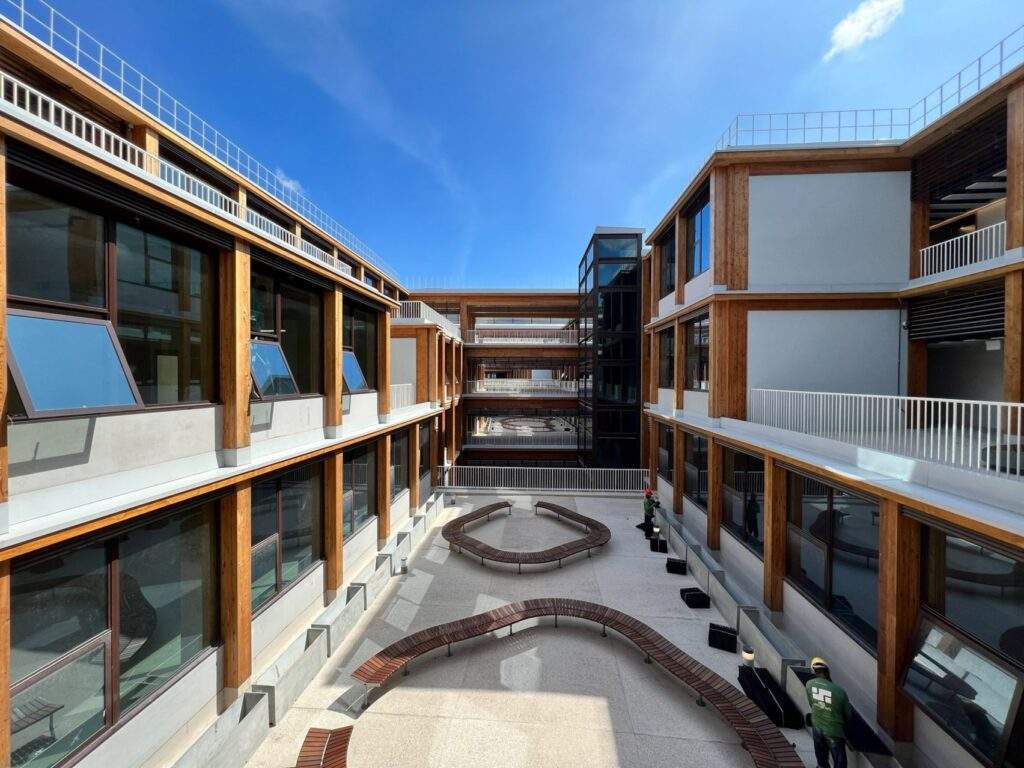Mould Growing on Toyo Ito “Largest Wooden Building in Asia”
Gaia, a mass-timber business school at Nanyang Technological University (NTU) in Singapore, designed by Japanese architect Toyo Ito and Singapore-based RSP Architects, has recently experienced mould growth on both its exterior and interior. Completed in 2023, the 43,500-square-metre building was touted as “the largest wooden building in Asia” by NTU, based on the volume of timber used.
Mould Growth and Causes
Mould was reported on various surfaces within Gaia, primarily on air-conditioning supply grilles and furniture. According to NTU, the mould growth resulted from condensation and rain exposure rather than the timber itself. Independent experts, including a built environment associate professor from the National University of Singapore, confirmed that the mould was due to humid external air coming into contact with cooler indoor surfaces, especially when windows and doors were left open for long periods.
Expert Insights and Building Materials
Despite concerns raised by external sources like Bloomberg, which suggested that the choice of untreated spruce could be susceptible to mould in Singapore’s high-humidity environment, NTU clarified that Gaia’s mass timber elements were properly sealed and met regulatory standards. The structure features glued-laminated timber beams and columns, and cross-laminated timber was used for floor slabs and solar shading.


NTU’s Response and Remediation Measures
NTU has emphasized the importance of health and safety for its community, with Chief Development and Facilities Management Officer Siew Hoong Kit assuring that the university is taking immediate action to address the issue. Remediation efforts include daily cleaning and maintenance to mitigate mould growth and prevent further spread.
Environmental Challenges
Gaia’s situation highlights the challenges of building with timber in tropical climates like Singapore, where humidity levels frequently reach 80%. While the mould issue underscores the importance of environmental considerations in material choice and building design, it also points to the need for continuous maintenance to preserve the integrity of mass timber structures in such climates.
Finally, find out more on ArchUp:







